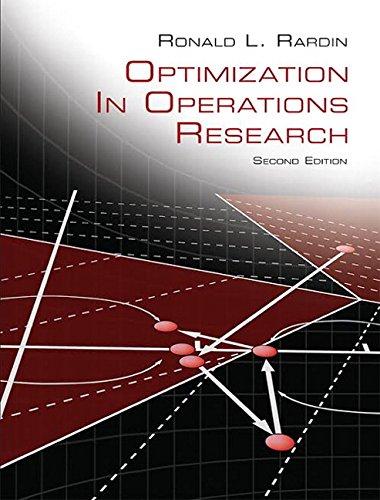Return to the model of Exercise 15-20 and consider applying Genetic Algorithm 15E. (a) First consider encoding
Question:
Return to the model of Exercise 15-20 and consider applying Genetic Algorithm 15E.
(a) First consider encoding solutions by taking sessions in i order and recording the time block t to which each is assigned.
Sketch what would happen if two solutions like this were combined in crossover. What kinds of infeasibility could result? Explain. Then discuss how it might be managed by penalizing infeasibility with suitable “big M” terms in the objective function.
(b) Now consider encoding solutions by first listing the 5 panel numbers for the first time slot, then the 5 for the second, and so on. Sketch what would happen if two solutions were combined in crossover with cut points limited to the 5 boundaries between session lists for particular time slots, that is, after entry 5, 10, 15, 20, and 25. What kinds of infeasibility could result? Explain. Then discuss how it might be managed by penalizing infeasibility with suitable “big M” terms in the objective function.
(c) Finally, consider the method of Random Keys defined in 15.13 . Specifically, the solution would be encoded indirectly with 30 random numbers corresponding to the 30 panels. To recover the implied solution and evalute the objective function, the 5 panels with lowest random numbers would be assigned to time slot 1, the next 5 to time slot 2, and so on. Explain why infeasiblity could not result from crossovers between 2 such solutions, and how that could make Algorithm 15E more effective.
Step by Step Answer:





